Endeavors for Mathematics for Industry in Japan
Masato Wakayama
keynote talk given at 9th Ludwig Boltzmann Forum, Embassy of Austria in Tokyo, 16 March 2017
by Masato Wakayama Executive Vice-President & Trustee, Kyushu University, Distinguished Professor of Mathematics
(Summary of Professor Masato Wakayama’s talk written by Gerhard Fasol)
Two important energies: hydrogen energy and prime number energy
- Hydrogen drives the hydrogen economy
- Prime numbers are at the core of encryption, the RSA Cryptosystem
Prime number were discovered almost 2500 years ago by the Pythagorean school in ancient Greece: the infinitude of primes, and the unique prime decomposition of integers.
2017 and Ludwig Eduard Boltzmann (LEB)
2017 is prime in Z (the set of all integers), i.e. indecomposable.
However, Theorem:
2017 = |LEB|^2 in Z[i] where i = sqrt(-1), i.e. Gaussian integers
Proof of the Theorem:
2017 is a Pythagorean prime, 2017 = 9^2 + 44^2
LEB = 1844 = 18 + 44 = 9 x 2 + 44 = (twice 9) + 44 (mod 99)
twice 8 equals 9i. It follows that LEB = 9i + 44
Corollary:
LEB’s birth year decomposes the prime 2017, that is, LEB Symposium 2017 opens New Thoughts.
9i + 44, in Japanese can be pronounced as:
(44 + 9i) よし!行く! which means: “Let’s go!”
(i9 + 44) 行くと良し which means: “Best to go.”
Manyo-Shuu Anthology (万葉集)
During Japan’s Manyo era, poets made puns based on multiplication tables.
Examples:
二二 = 2 x 2 = 4 = し
十六 = 16 = 4 x 4 = しし
八十一 = 81 = 9 x 9 = 九九
二五 = 2 x 5 = 10 = とを
etc
An example is:
『万葉集』巻十一(2542)
若草乃 新手枕乎 巻始而 夜哉将間 二八十一不在国
(若草の、新手枕を、巻き初めて、夜をや隔てむ、憎くあらなくに)
訳:若草のような妻とはじめて手枕をかわしそめて
どうして一夜でも間を置くことができようか
可愛くてしかたがないのに
“Manyo-shuu” Voll.11 (2542)
Ever since I started to sleep on the hand of
my new wife as a pillow, soft as young grass/
It is no longer possible to be separated from
her over night/ How could I, when there is not
a speck of hate in my heart
Historical background in Japan
1603 – 1868, Edo period, Samurai era
We had a peaceful period in Japan, and Japan was a closed country.
Takakazu Seki 関孝和 (1642 – 1708)
In 1674 discovered the determinant, earlier than the discovery by Leibniz in 1683.
He discovered Bernoulli numbers independently around the same time as Jacobi Bernoulli.
He discovered:
derivatives and integrals (in the West: Newton, Leibniz)
but, there was no discovery of the fundamental theorem of Calculus.
Mathematics votive tablets (san-gaku) featuring mathematical puzzles, mainly Euclidean Geometry.
1868 – 1912, Meiji Period, opening of Japan
Social system, law were imported from Britain
Science, technology were imported from Germany
Culture and arts were imported from France
In pure Mathematics, Göttingen in Germany was the leading center, and pure mathematics was imported from Göttingen to Japan
Applied mathematics was much harder to import to Japan.
1926 – 1989: Showa period, from 1989: Heisei period
Japan’s period of fast growth.
Japan had many strong applied mathematicians before high performance computers were developed in the mid-1990s, but they were not regarded or valued as mathematicians.
After the introduction of high performance computers, applied mathematics decreased in emphasis in Japan.
The Policy Study No. 12 of 2006 by NISTEP (of MEXT) created a shock for Japan’s mathematics community: the report wrote “Japanese mathematics is not as strong as we had expected”:
“Mathematics as deserted science in Japanese S&T policy” ― Current situation on mathematical sciences research in major countries and need for mathematical sciences from the science in Japan ―
May 2006
by: Moritaka Hosotsubo, Yuko Ito, Terutaka Kuwahara
The main reason for this weakness was found to be the weakness and decreasing numbers of applied mathematics, and applied mathematicians.
The report stated: “It is desirable to have the same percentage of workers in the private sector of research and development as the West, which is 65%. However, in Japan the percentage in the private sector is only 26%. This shortage and nearly 40% gap relative to the West must be overcome”
At the same time, there was a world-wide trend in favor of mathematics for industrial technologies:
- Institute for Math. Its Appl., Univ. of Minnesota (USA, 1982 – )
- Oxford Centre for Indust. Appl. Math. (OCIAM), (UK, 1989 – ), OCCAM (2008-)
- Fraunhofer Institute for Industrial Mathematics ITWM (Germany, 2000- )
- European Consortium for Mathematics in Industry (ECMI) (1986 – )
- OECD/Global Science Forum “Reports on Mathematics in Industry” (2008,2009)
- MATHEON (Germany)
- MITACS (MPRIM, Canada)
As a consequence, MEXT commissioned an investigation project “Investigation and estimation of promotion of cooperation of mathematics and mathematical science with other fields – Toward a proposal for the 4th governmental science & technology master plan”
(October 2009 – March 2010)
Implementing organizations were:
Kyushu University (Main),
University of Tokyo,
Mathematical Society of Japan,
Nippon Steel Company.
And the representative was: Masato Wakayama (Kyushu University)
We investigated and estimated the activities of mathematics and mathematical science, and those of their cooperation with the other fields that have been implemented in Japan, and thereby gained ideas for making a proposal to the Japanese government for promoting mathematics and for strengthening cooperation with various fields surrounding mathematics.
As a consequence of this investigation project:
- The 4th Governmental Science & Technology Basic Plan (2011) of the Prime Minister’s Council of Science and Technology Policy (CSTP) for the first time ever stated that Mathematical Sciences are important and should be promoted.
- The Mathematics Innovation Unit was established in MEXT
- The Committee of Innovation by and for Mathematics was established by the Committee of Science and Technology (2011)
- MEXT organized 22 workshops in mathematics and 36 workshops in mathematical sciences and math-for-industry
- Cooperations with Mathematics programs and several leading schools of mathematics
2016: The 5th Governmental Science and Technology master plan again emphasizes mathematical science
Some resulting research programs:
- Alliance for breakthrough between mathematics and sciences (ABMS), leader: Yasumasa Nishiura (WPI Advanced Institute for Materials Research, Tohoku University) JST CREST/PREST 2007-2016
- Modeling methods allied with modern mathematics, leader: Takashi Tsuboi (Graduate School of Mathematical Sciences, University of Tokyo) JST CREST 2014-
- Collaborative mathematics for real world issues, leader: Hiroshi Kobuku (Dept of Mathematics, Graduate School of Science, Kyoto Univ) JST PREST 2014-
- Meiji Institute for Advanced Study of Mathematical Sciences (MIMS), leader: Ichiro Hagiwara (Director Meiji University) 2007 –
The Institute of Mathematics for Industry (IMI) of Kyushu University
- April 1911: Kyushu University was founded as the 4th of 7 Imperial Universities
- June 1939: Dept of Mathematics founded
- June 1994: Graduate School of Mathematics and Faculty of Mathematics founded
- April 2007: Mathematical Research Center for Industrial Technology (MRIT) founded
- April 2008: Global COE Program “Education & Research Hub for Mathematics-for-Industry”
- April 2011: Institute of Mathematics for Industry (IMI) founded
- September 2014: IMI Australia Branch at La Trobe Univ. (Melbourne) founded
Some achievements of Kyushu University’s Institute of Mathematics for Industry (IMI) include:
- Long term internships from industrial partners
- Joint projects with industry: 29 projects with 22 companies
- Study groups at IMI, Study Group Workshops
- Forum Math-For-Industry: 2014, 2015, 2016
- Pacific Journal of Mathematics for Industry
- Mathematics for Industry
Study of Casimir effects
The Casimir effect (https://en.wikipedia.org/wiki/Casimir_effect) leads to attraction between opposite mirrors in a vacuum, which are spaced a short distance apart, due to electro-magnetic wave fluctuations in the vacuum. The Casimir effect was first predicted in 1948 by Hendrick Casimir (1909-2000), and first measured by Steve K. Lamoreaux 1996.
An equivalent effect exists between ships which are spaced close to each other, see: SL Boersma, “A maritime analogy of the Casimir effect,” Am. J. Phys. 64, 539–541 (1996), http://dx.doi.org/10.1119/1.18150.
Derivation of the Casimir effect shows that the force between the two plates is directly related to Riemann’s zeta function, which again is directly connected with prime numbers.
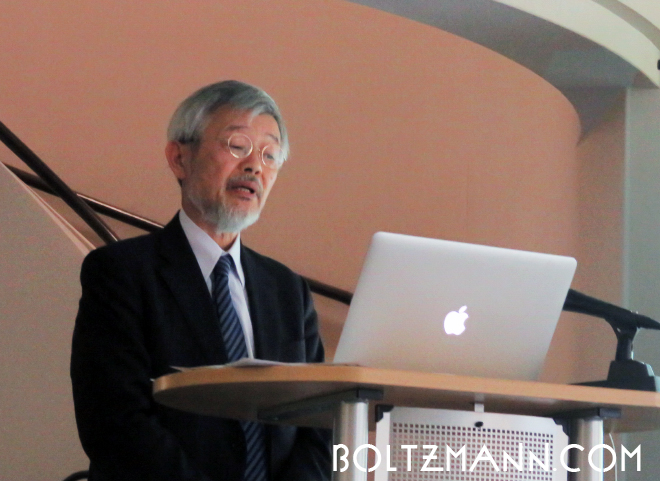
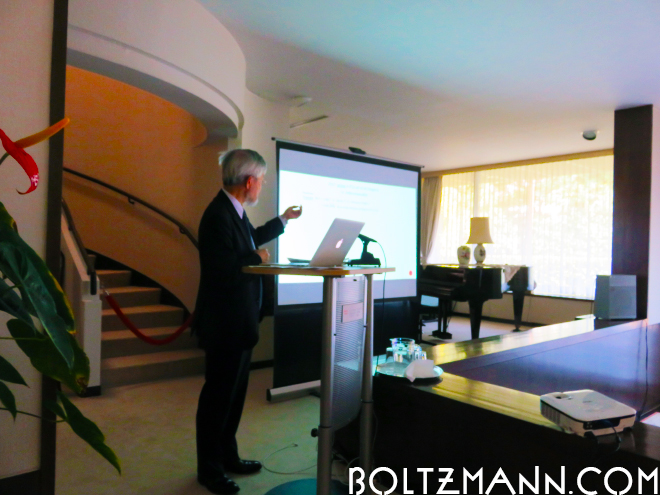
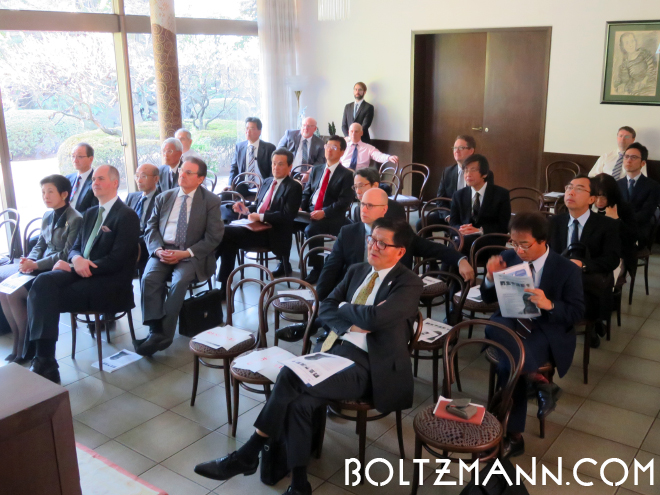
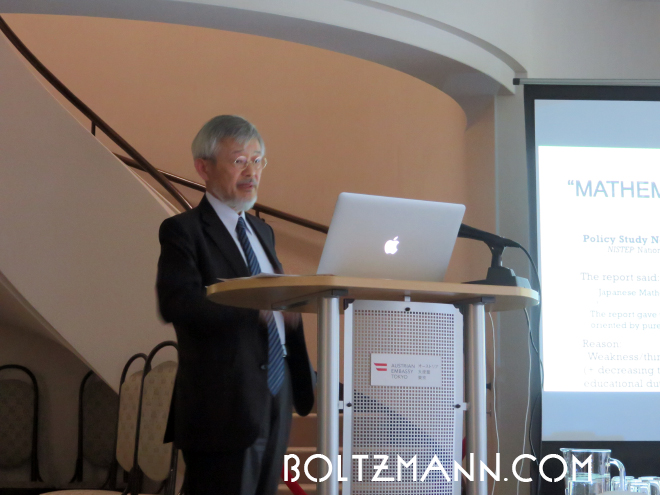
Copyright (c) 2017 Eurotechnology Japan KK All Rights Reserved
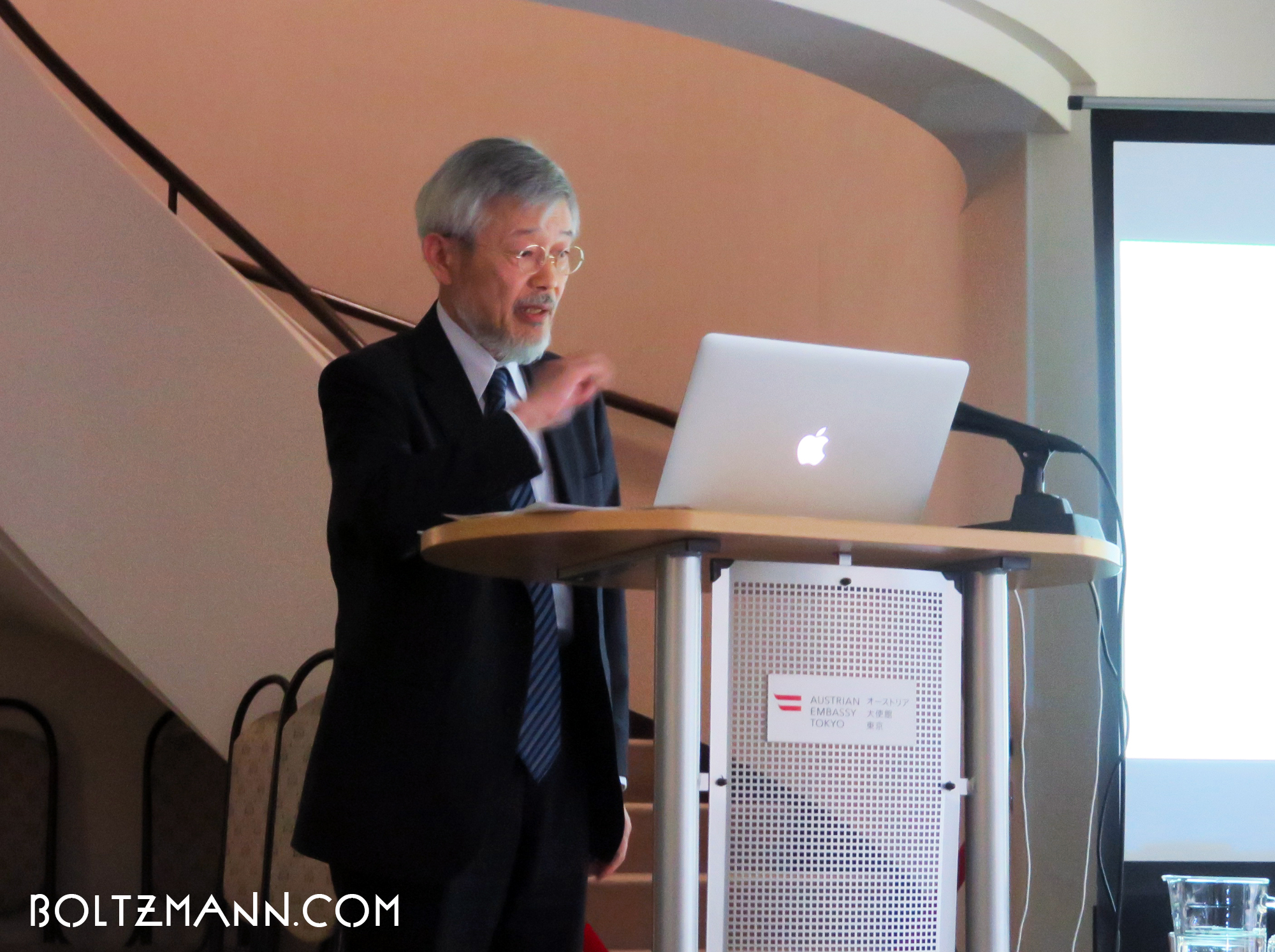
Leave a Reply